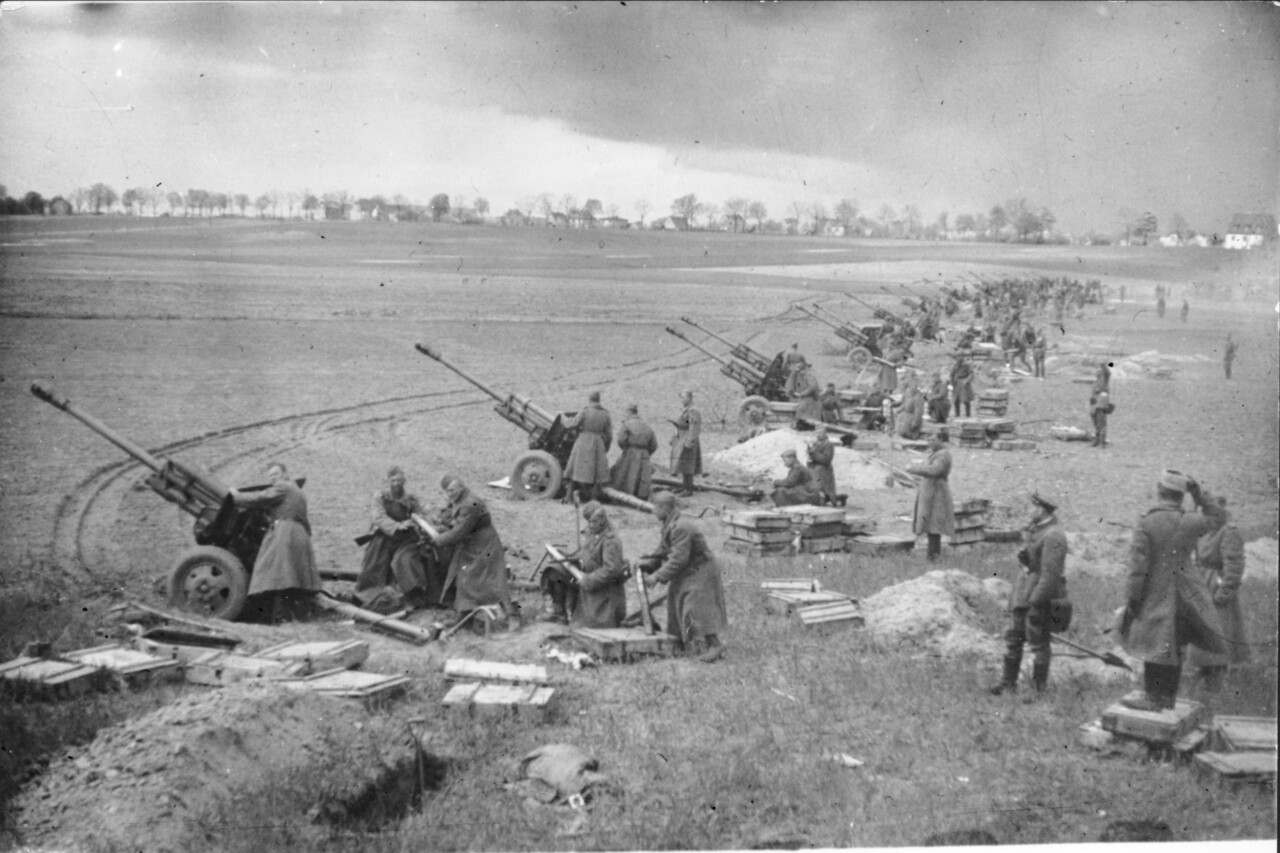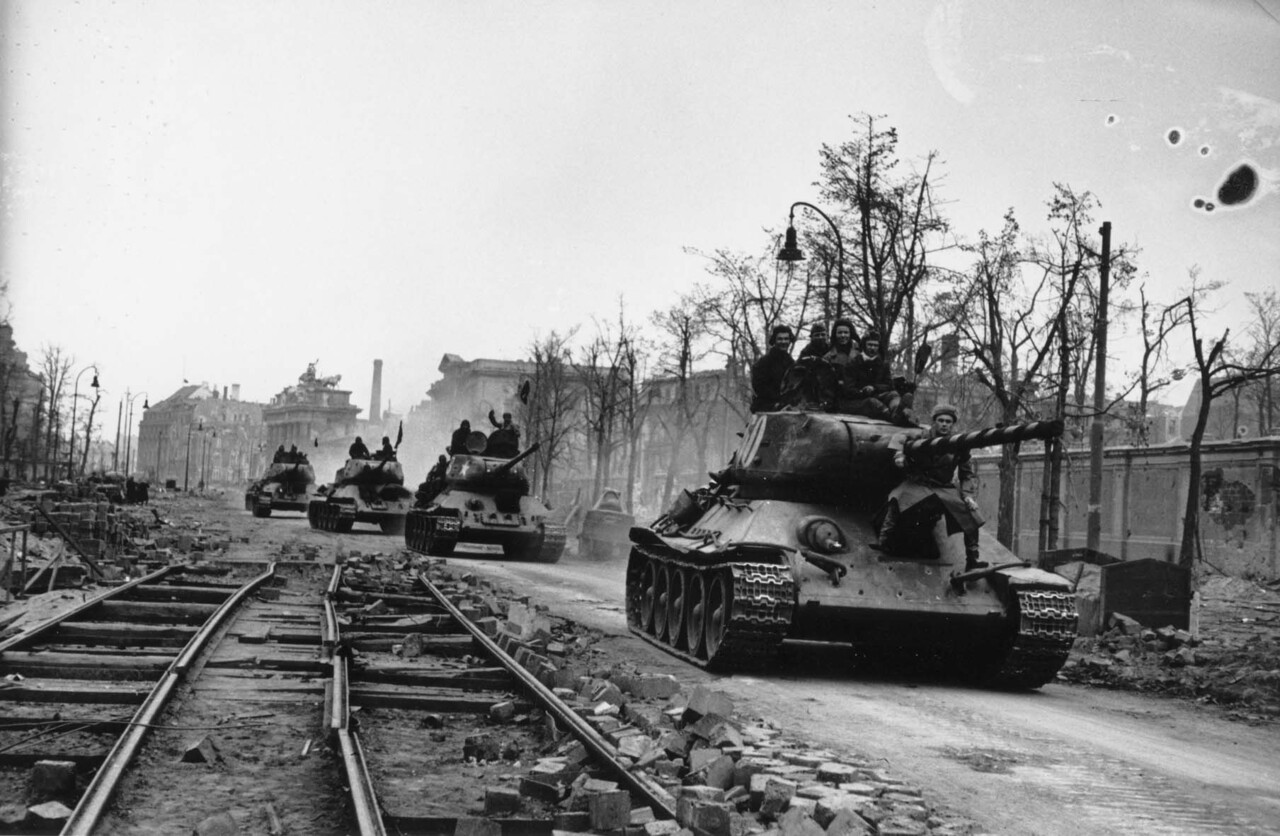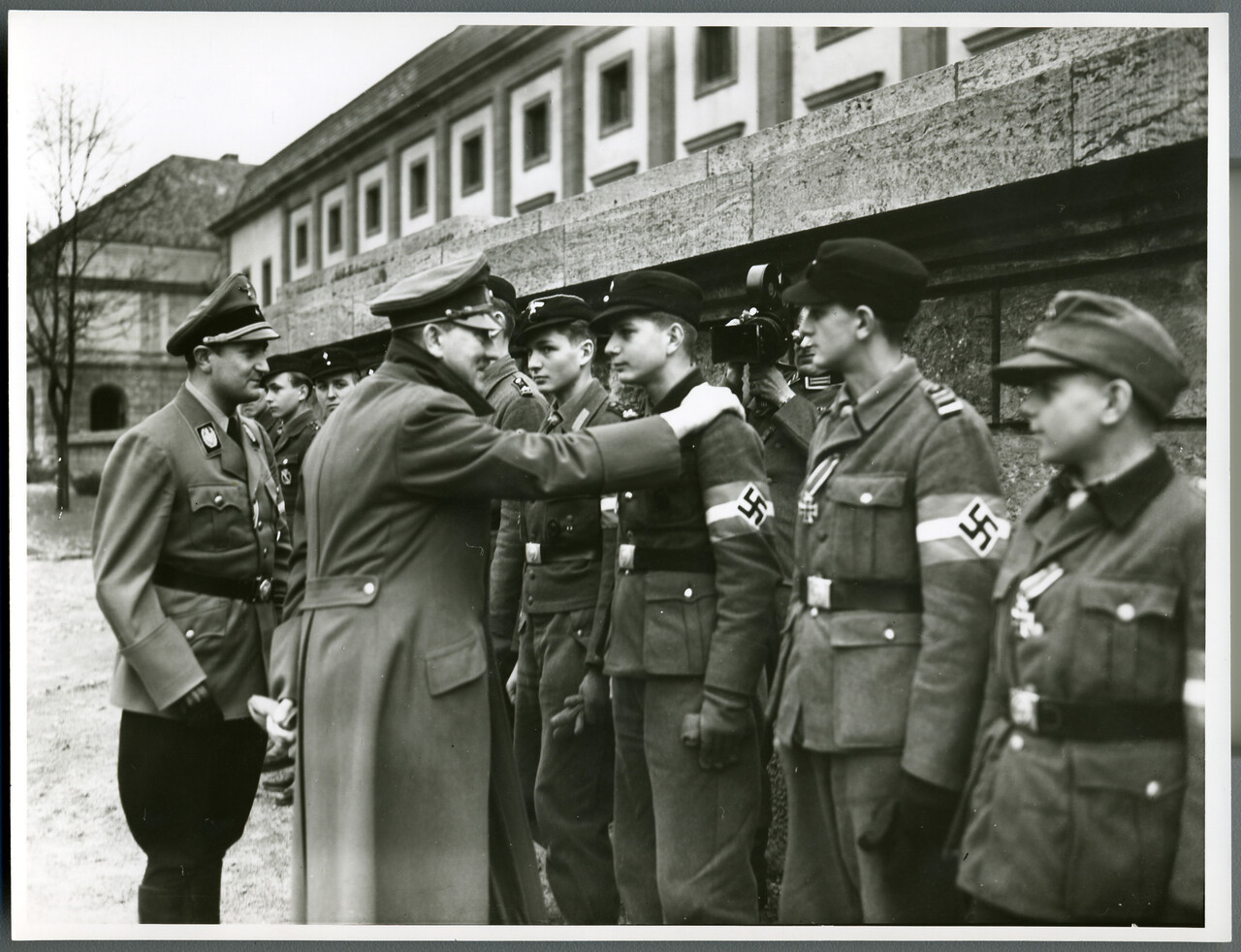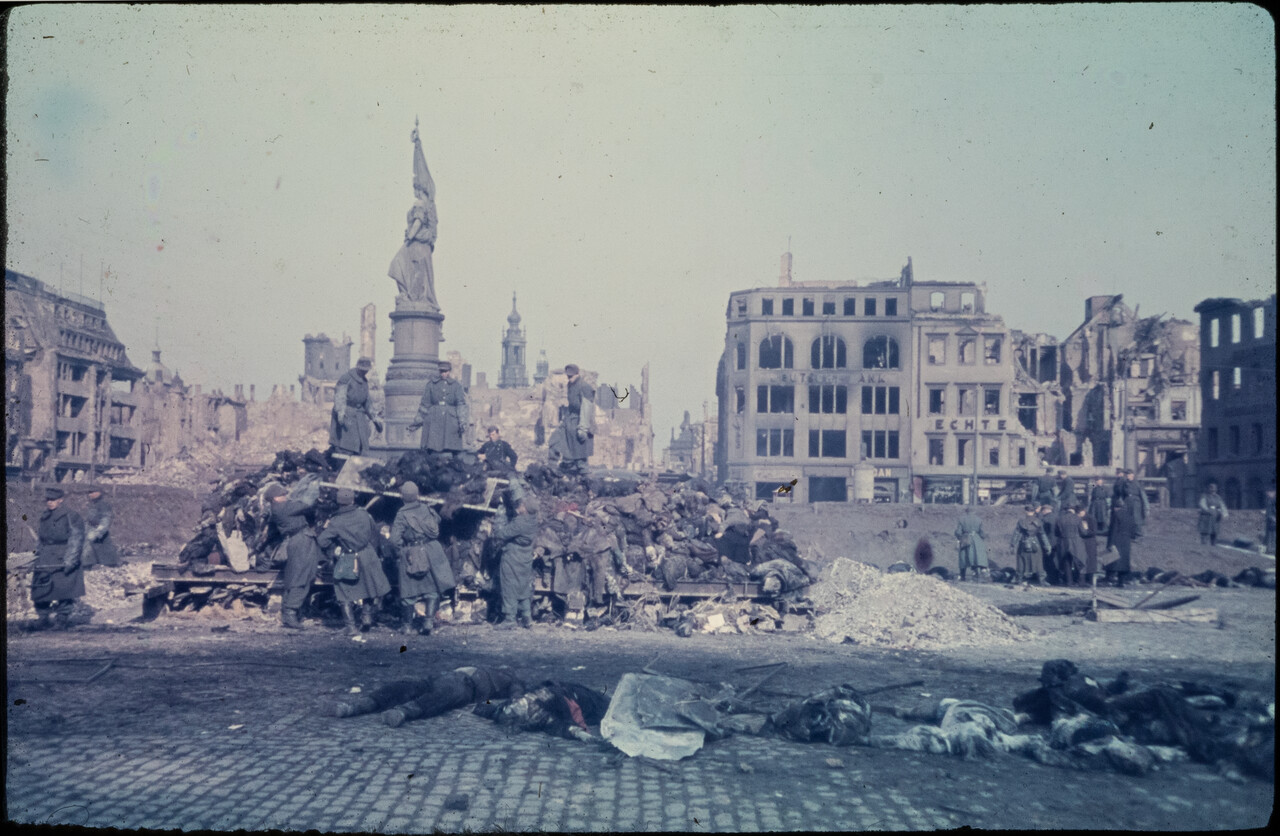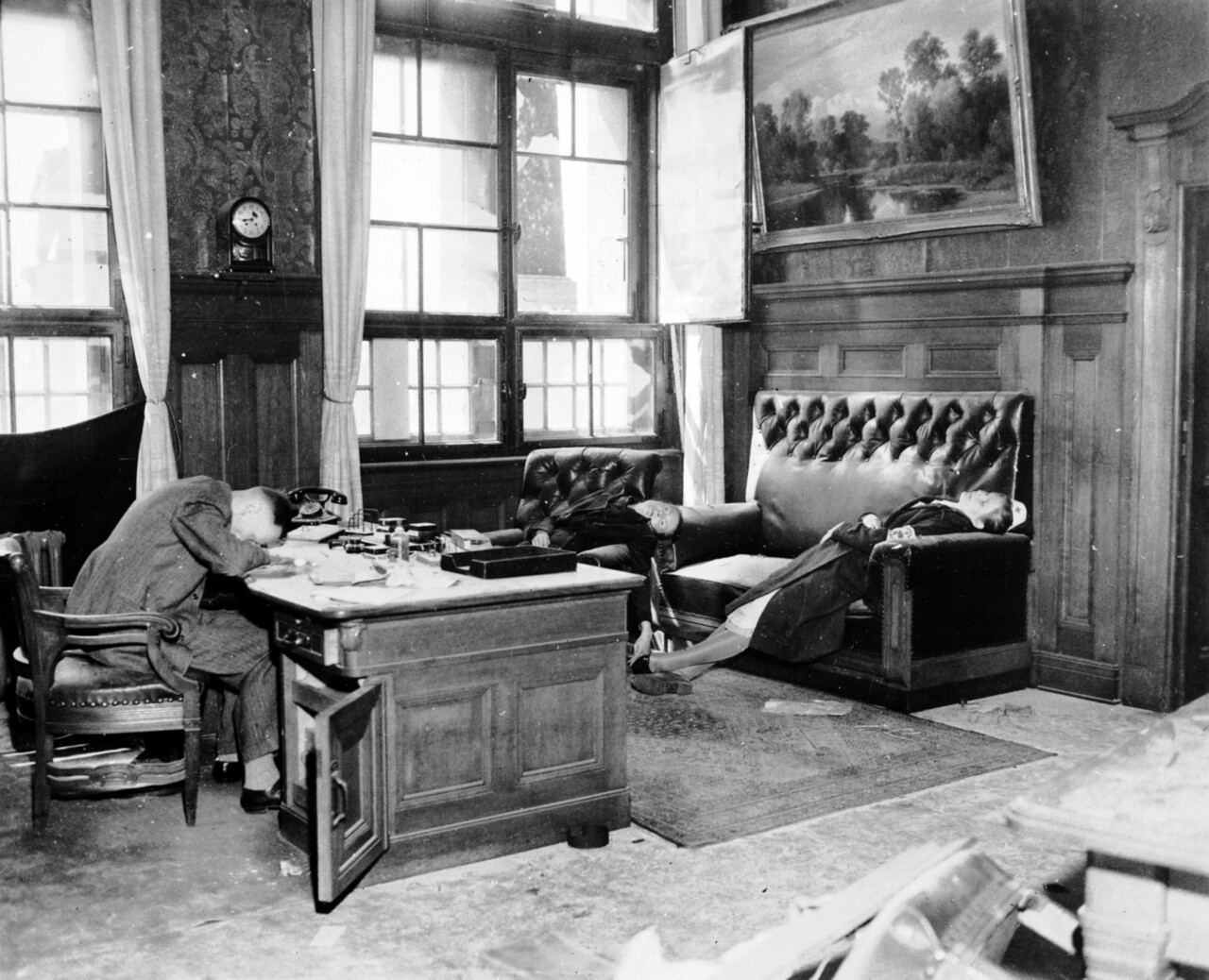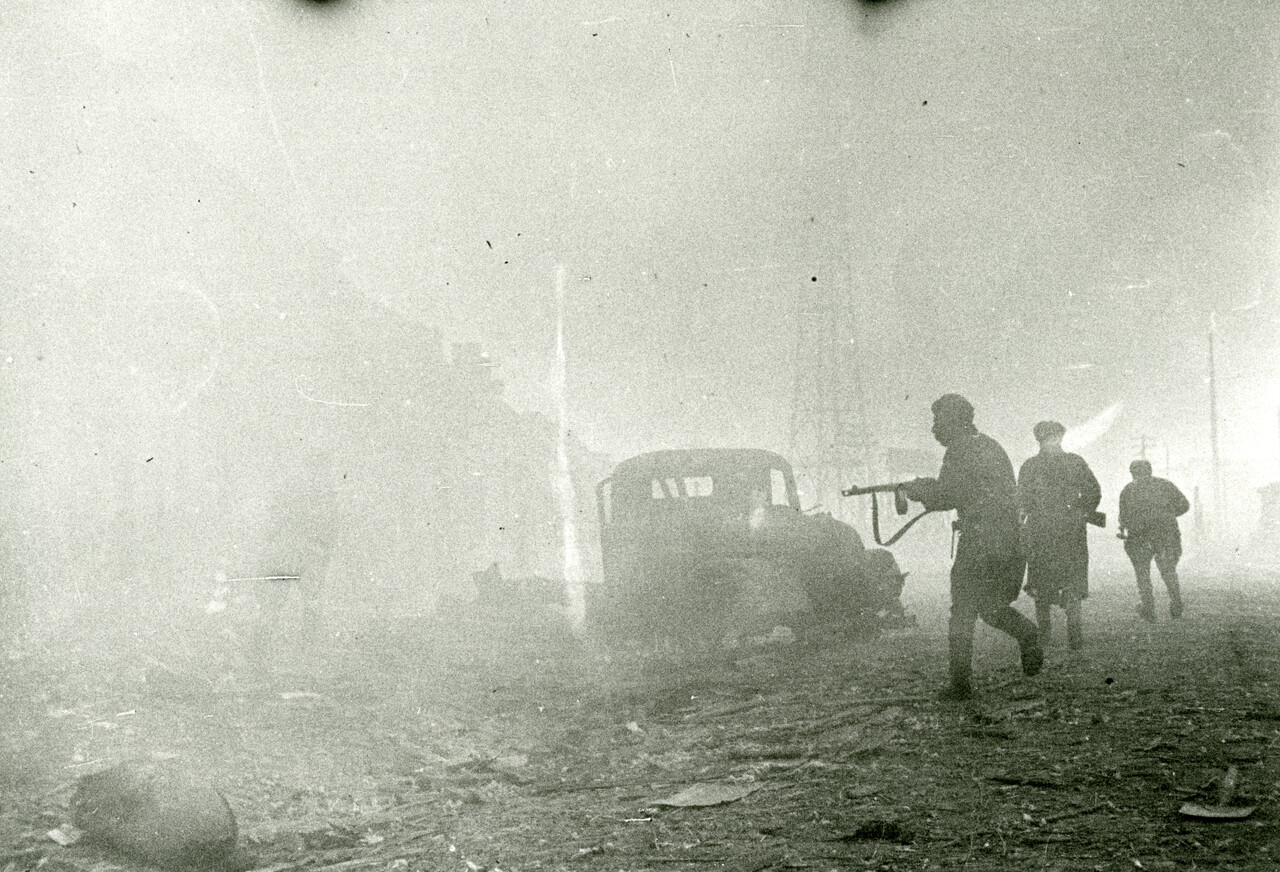Fanatical Fight to the End
After the German defeated in Stalingrad (Volgograd) in Russia at the beginning of 1943, the Red Army fought its way inexorably westwards. On 6 June 1944, the British and Americans, but also Poles, landed in French Normandy and opened up a second front in the west. On 12 January 1945, Soviet units launched an offensive against the Wehrmacht on the Reich's eastern border, reaching the Oder a few weeks later. Soviet units – 2.5 million men and women – launched a pincer attack on Berlin from mid-April 1945. They were confronted by one million Wehrmacht soldiers, SS units and the »Volkssturm« (People's Storm). Many civilians and soldiers who were unwilling or unable to fight were murdered by the Waffen-SS's »flying tribunals«. On the 30th of April, in battles with heavy losses, the Red Army captured the Reichstag building, the symbol of »Hitler fascism« in the centre of Berlin. A few hours earlier, Adolf Hitler (1889 – 1945) committed suicide.
Berlin, eastern outskirts, end of April 1945: Soviet artillery fires on the Reich Capital. After the battle for the Seelow Heights from 16 to 19 April, which was extremely costly for the Wehrmacht and the Red Army, the 1st Belorussian and 1st Ukrainian Fronts under Marshal Georgi Zhukov (1896 – 1974) reach the outer defensive belt around Berlin two days later and encircle the city on 25 April.
Bundesarchiv, Bild 183-E0406-0022-012
Berlin, garden of the New Reich Chancellery, 20 March 1945: Hitler and »Reich Youth Leader« Artur Axmann (1913 – 1996) award members of the »Hitler Youth« who fight in the »Volksturm« with the Iron Cross in front of the camera. From September 1944, boys and old men had to take part in combat after a short briefing; tens of thousands fell.
bpk, 70716415
Dresden, 25 February 1945: German soldiers burn the bodies of people killed in air raids on Dresden's Altmarkt square. To break the German population's will to hold out, the British and Americans increased their bombing. Up to 25,000 people died in Dresden between 13 and 15 February 1945. Despite this, the German authorities continued their crimes: on 15 February, the last transport of 56 Jews left the destroyed Elbe metropolis – bound for Theresienstadt.
Stadtarchiv Dresden, 16.2.40 Hahn, Walter und Draber, Helmut, Nr. F 014
Leipzig, New City Hall, 20 April 1945: City treasurer, deputy mayor and staunch National Socialist Dr Kurt Lisso (*1892, at desk), his wife Renate (*1895) and daughter Regina (*1924, with Red Cross cap) took their own lives on 18 April. In fear of the Allies or in despair at the end of the Third Reich, thousands of Germans committed suicide in 1945.
National Archives and Records Administration, Washington D. C., correspondent: Elisabeth »Lee« Miller (1907 – 1977), 531270
Königsberg, April 1945: members of the Red Army fighting in the streets. Alongside Berlin, the East Prussian capital, a »stronghold of German militarism«, was the target of the great Soviet offensive in mid-January 1945. The »fortress« fell on 9 April. The remaining 130,000 inhabitants were left defenceless. In the following months, tens of thousands of people died of hunger and epidemics.
Museum Berlin-Karlshorst, photo correspondent: Michail Savin (1915 – 2006)
